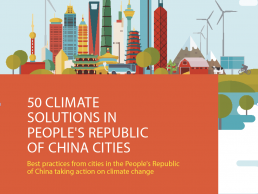First appeared in

Asian Development Bank
50 climate solutions from cities in the People's Republic of China
Shanghai is making the most of existing buildings with the redevelopment of the former Shanghai 2010 EXPO site. Utilizing urban renewal best practice, green building standards, and ecological design will ensure the best sustainability outcomes for the project.
The site from the Shanghai 2010 EXPO is being transformed to provide a sustainable, pedestrian-friendly neighborhood and recreational space for the community. The project has taken a holistic approach to the transformation, with natural ecosystems, green infrastructure, and sustainable building design integrated throughout. Initiatives in the neighborhood include a low-carbon transportation plan to utilize new renewable energy systems, and a water-efficient irrigation system with an interconnected rainwater management system. Two of the three phases of the project are already complete and have received international recognition, with the first Leadership in Energy and Environmental Design (LEED) Platinum level “green” neighborhood design outside North America.
24%
IMPROVEMENT IN BUILDING ENERGY PERFORMANCE HAS BEEN ACHIEVED ACROSS ALL BUILDINGS IN THE PROJECT
The project involves renewable energy sources and innovative technologies from
the Sponge City Technical Guide making the site able to retain up to 90% of local rainfall events. Water retention strategies include the provision of green
infrastructure and rainwater harvesting systems resulting in a 59% reduction of the water usage over the site. The integration of old and new buildings and natural ecosystems, combined with convenient access to public transit systems as well as walking and cycling paths, has resulted in the design of a truly sustainable neighborhood.

From industrial park to Shanghai 2010 EXPO site and now an award-winning sustainable neighborhood, the area has undergone a major transformation.
The Challenge
Large international events can leave cities with pockets of underused land and infrastructure. Urban renewal projects can turn these sites into an opportunity for the city, delivering social, economic and environmental benefits.
Co-Benefits
Economic The redevelopment incorporates sustainable design features such as water-saving measures, as well as the rehabilitation of native vegetation, and improvement of natural ecosystems.
Health New access to green spaces, sports grounds, and pedestrian bridges stimulate more physical activities and the green spaces improve air quality in the neighborhood.
Social The landscaped gardens, walking, and cycling tracks provide the community with recreational space and sports facilities.

